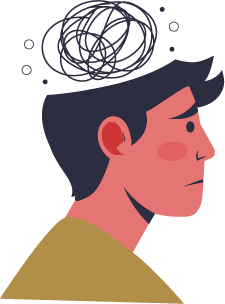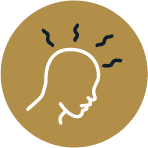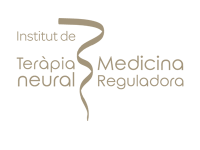Co-occurring Disorders Treatment
11 Minutes
CONTENTS

According to current statistics on co-occurring diseases, millions of people in the United States suffer from mental health issues. Substance addiction disorders, sadly, have a strong link to mental health issues. A co-occurring disorder affects around 7.9 million people in the United States. This article will examine why some people develop co-occurring disorders, how they present, and where they can seek treatment.
According to the Substance Abuse and Mental Health Services Administration, an integrated treatment approach that tackles SUDs and other mental disorders at the same time can help individuals with co-occurring disorders enhance their quality of life and health outcomes. Behavioral therapy and medication are usually used to customize treatment to a patient’s particular diagnosis. This guide discusses the incidence of co-occurring mental conditions, how they’re treated, and how to locate treatment for substance abuse disorders that co-occur with mental problems.
When a person has a mental health condition and does not receive sufficient care, they are more prone to turn to drugs and alcohol to alleviate their symptoms. Substance abuse and mental disorders are medically referred to as co-occurring disorders because they generally occur at the same time. Co-occurring disorders necessitate more intensive therapy than single-disorder patients. Drug abuse and psychiatric disease have a tendency to increase each other’s symptoms. Substance abuse disorder (SUD) can also have a negative impact on physical health, making therapy more challenging for this group of patients.
A single or a combination of the following three factors may lead to the co-occurrence of mental disorders.

Self-Medication
Substance abuse can often be used to manage the symptoms of mental illness. There are various causes for self-medication; however, this may be deceiving because self-medication can conceal symptoms while simultaneously exacerbating them over time.

Predisposing Factors
There has been some indication that genetic makeup, hereditary factors, and environmental elements, like trauma, may play a role in the progression of substance abuse problems and other mental health issues.

Drug-Induced Cerebral Changes
Drug abusers are much more prone to acquire mental health illnesses that damage the brain as a result of their continued use of substances, according to research. There are brain regions linked to substance abuse, as well as those linked to behavioral impulsive behavior and impulse control, anxiety issues, mood disorders, and schizophrenia.
Over a third of the 20.3 million individuals given a diagnosis with SUDs also suffer from mental disorders.
SUD affects over 20 percent of the 42.1 million individuals who have been identified with a mental illness.
Sadly, more than half of the individuals diagnosed with co-occurring illnesses never receive medical treatment for either disorder.
For even more than half of the people who have been diagnosed but do not undergo treatment, the biggest obstacle to therapy is cost.
The differences are somewhat technical, but for the most part, these terms are interchangeable. Though both phrases reflect a situation in which a person has both a mental health issue and a SUD, the concept of dual diagnosis is progressively being substituted by the premise of co-occurring disorders. Each condition would be a comorbidity of the other in this circumstance, while the term comorbidity is also commonly used outside of the behavioral health/mental health professionals to denote the co-existence of various medical conditions.
Moreover, dual diagnosis is a psychiatry phrase that refers to a person who has two or more psychiatric illnesses at the same time, each with its own diagnosis. The phrase “dual diagnosis” was first used in the 1980s to describe people who had both a serious mental disorder and a SUD. The phrase “co-occurring disorders” has been used by the Substance Abuse and Mental Health Services Administration (SAMHSA) ever since the early 2000s to describe the existence of two or more problems. However, Dual Diagnosis Anonymous, which was founded in 1996, is an international organization of support groups for anyone attempting to live a healthy, substance-free life.
As a result, a co-occurring disorder is now most commonly used to describe someone who has a SUD and another psychiatric problem, while it can also apply to someone who has two or even more mental disorders, like comorbid schizophrenia and depression. One or more co-occurring mental illnesses are frequent among patients with SUDs, with roughly half of those who have one also having the other. Co-occurring conditions frequently overlap, and they may arise at the very same time or sequentially.
SUDs as well as other mental health problems have a significant relationship. In fact, over half of the people with one illness will develop at least one other co-occurring mental health disease throughout the course of their lives. Co-occurring diseases can exacerbate the intensity of each other’s symptoms.
The Diagnostic and Statistical Manual of Mental Disorders (DSM-IV) is used to diagnose substance use disorders and mental health. This manual serves as a guide for doctors who are diagnosing substance abuse and mental health disorders based on common symptoms. While substance abuse and mental health difficulties have specific categories, the handbook previously lacked explanations of co-occurring conditions.
This improved with the publication of the DSM-5, the fifth edition of the manual, which was amended to better characterize co-occurring mental health and substance use problems. It was recognized that an individual with a co-occurring disorder will typically have the same psychological symptoms as someone with a mental disorder but no substance use issue. It also considers the fact that a person with a mental health problem does not inevitably have a worse substance use disorder. In essence, the person will show signs of both conditions.
Researchers have recently discovered that Integrated Therapy is the most effective treatment for those with co-occurring disorders.
According to the Substance Abuse and Mental Health Services Administration, combining addiction and psychiatric treatment strategies can prevent flare-ups and suicidal tendencies among rehab grads while also promoting long-term abstinence.
Treatment of co-occurring addiction disorders and mental health is critical for several reasons:
- An Integrated Recovery Plan attempts to alleviate the negative consequences of mental health illnesses, such as difficulty paying attention, depression, and a reluctance to socialize.
- When pharmaceutical therapy targets both disorders, you’re more likely to successfully manage your mental health problems and drug-related disorder at the same time.
- Traditional reservations regarding the use of psychotherapeutic medications in the treatment of co-occurring illnesses are no longer valid.
- Patients with co-occurring conditions who participate in group therapy expand their support system. This training can also be used to tackle issues like substance abuse.
- Relapse is less likely when both mental and addiction problems are treated at the same time, like mood swings, depression, or panic attacks.
- Staff workers with particular training and certifications in Dual Diagnosis treatment work in facilities that focus on treating co-occurring illnesses. Patients with co-occurring disorders encounter unique challenges as a result of their mental illness, according to these addiction professionals.
Integrated treatment aims to teach persons with co-occurring illnesses how to stay sober or significantly decrease their substance use while also managing their mental disease symptoms.
This is achieved through the use of efficient counseling and behavioral therapy methods, as well as drugs in some cases. Integrated treatment may include a variety of therapeutic strategies that have been shown to be successful in the treatment of substance use disorders and mental health, such as:
CBT or Cognitive behavioral therapy is a type of treatment that looks into a person’s beliefs and thoughts in order to modify their behavior.
DBT or dialectical behavioral therapy is a treatment for borderline personality disorder that focuses on reducing negative behaviors such as self-harm, substance abuse, and suicidal conduct.
Patients who display appropriate and positive behaviors, like clearing a drug test or avoiding self-harm, are rewarded with tiny incentives through contingency management.
Motivational enhancement is a technique that can help people become more motivated to make positive changes during their therapy.
Mutual-support groups for individuals with co-occurring conditions, like Narcotics Anonymous and Dual Diagnosis Anonymous meet on a regular basis.
Integrated therapy for SUDs can occur at any point throughout the continuum of care, including:
Detox, or Withdrawal Management: Detox, also known as withdrawal management, is a type of medically controlled detox that entails medical supervision 24 hours a day, seven days a week. Staff is on-site 24 hours a day, seven days a week, and clinicians may write prescriptions as needed to guarantee safety while detoxing from narcotics and alcohol.
Inpatient Care or Residential Treatment: Individuals enrolled in residential or inpatient therapy live at a rehab facility 24 hours a day, seven days a week for the duration of their treatment. While clients learn to control their drug use and manifestations of any co-occurring illnesses, medical and mental health experts are always available or on call to give support, medication, and other services.
Outpatient Treatment: Outpatient treatment allows patients to get similar (if not identical) care as inpatient treatment, but with the added benefit of being able to stay at home while still getting treatment for co-occurring conditions.
Although most emotional concerns, such as low self-esteem, sadness, guilt, and anger management problems, can have a big impact on a person’s addiction troubles, these concerns are often deemed as symptoms rather than disorders. When we talk about disorders, we’re talking about the real diagnosis that causes the above-mentioned symptoms.
Some of the most common co-occurring disorders in people who abuse substances are as under:

Generalized anxiety disorder

Eating problems

Bipolar Disorder

Post-traumatic stress disorder

Mood Disorders and Personality Disorders

Schizophrenia

Attention Deficit Hyperactivity Disorder
Read in detail about these co-occurring disorder:
1. Generalized anxiety disorder
Individuals with repeated, regular panic and anxiety attacks, as well as symptoms like sleep difficulties, agitation, and impaired functioning, are diagnosed with generalized anxiety disorder. Individuals who suffer from frequent anxiety may turn to alcohol and drugs for a variety of reasons. While some people abuse prescribed anxiety medicines like Xanax, others use illicit drugs or alcohol to improve their social skills or deal with anxiety symptoms.
2. Eating problems
Individuals in need of addiction therapy are frequently diagnosed with eating disorders like bulimia and anorexia. To suppress hunger and boost confidence, people frequently utilize medicines like diet pills and stimulants, as well as alcohol. These issues frequently coexist with body dysmorphic disorder, a condition in which a person is hypercritical of their own looks and agonizes over perceived imperfections in their own body.
Eating disorders are more common among young adults, but they can affect anyone at any age.
3. Bipolar disorder
Bipolar illness patients are more vulnerable to alcohol and drug abuse and addiction. A biochemical disequilibrium in the brain produces this mental disorder, which leads the individual to have uncontrollable, intense episodes of sadness and mania. Some people with bipolar disorder self-medicate in order to decrease the severity of their episodes, which causes an increase in bipolar episodes and serious addiction.
4. Post-traumatic stress disorder
After a person goes through situations that create tremendous stress and, in some situations are life-threatening, post-traumatic stress disorder (PTSD) evolves. Violent crimes, car accidents, and war are only a few examples. Individuals with PTSD frequently have night terrors and flashbacks. Some of these persons seek relief from their symptoms through the use of drugs and alcohol, which can contribute to further emotional and sleep disturbances.
5. Mood disorders and personality disorders
Personality and mood disorders including borderline personality disorder (BPD) and obsessive-compulsive disorder (OCD) have a wide range of symptoms. BPD is one of the most frequent of these diseases, and it can cause impulsive behavior, significant mood changes, and emotional instability. These individuals frequently struggle to sustain interpersonal relationships and some resort to alcohol and drugs as a coping method.
6. Schizophrenia
Schizophrenia is a serious mental illness that involves hallucinations, delusions, psychosis, and disordered thinking in patients. Most schizophrenics lose their ability to discriminate between reality and fiction, and it’s not unusual for them to turn to alcohol or drugs to cope with their feelings.
7. Attention deficit hyperactivity disorder
Children and young adults with attention deficit hyperactivity disorder (ADHD) are frequently diagnosed. It’s characterized by a lack of concentration, impulsivity, and hyperactivity. Prescription drugs, particularly stimulants, are usually administered to patients suffering from this illness. We routinely find young adults who are misusing their prescriptions, and those who are self-medicating and suppressing their symptoms with alcohol or other substances.
FAQs
Is Integrated Treatment for Co-occurring disorders Available in Every Rehab Facility?
No, but 53 percent of 15,961 treatment centers in the United States provided treatment programs for individuals with co-occurring conditions, as per a 2019 survey.
The integrated therapy at 13 American Addiction Centers begins with a thorough psychiatric assessment and evaluation, which includes determining the amount of drug use as well as the incidence of other mental health conditions.
This allows you to talk about any mental health symptoms you are having or anything you have been identified with, and you will engage with a psychiatrist to establish an individualized treatment plan that will include drugs if necessary.
HOW THE BALANCE CAN HELP WITH Dual Diagnosis
The Balance RehabClinic is a leading provider of luxury addiction and mental health treatment for affluent individuals and their families, offering a blend of innovative science and holistic methods with unparalleled individualised care.
A UNIQUE METHOD TREATING Dual Diagnosis
a successful and proven concept focusing on underlying causesOur program consists of treating only one client at a time individually designed to help you with all the problematic aspects of your life. All individual treatment sessions will be held at your private residence.
more infoYour program is designed based on your personal needs. The team will exchange daily information and adjust the schedule as we go. Our therapists will work with you treating the root causes and not just the symptoms and goes beyong your stay to ensure lasting success.
more infoOur biochemical imbalance can be affected by diet and stressful life events, but it often goes back to genetics and epigenetics. We do specific biochemical laboratory testing to determine an individual’s biochemical imbalance. Combining the results of the lab tests with anamnestic information and clinical tests, we prescribe an individualized and compounded vitamin, mineral, nutrient protocol to help recover from various disease states.
more infoOur experts combine the best from psychological treatment, holistic medicine to support you individually and providing complementary therapies all coordinated from one source working complementing each other integrative.
more infoUsing latest cutting-edge technology-based therapies such as Neurofeedback, tDCS, and SSP, we can track the biological patterns of your body, giving us valuable insight into your health and well-being as well support your brain and body performance and recovery with neuromodulation.
more infoComplex trauma is often a key factor to distress mental and physical state. The Balance provides a safe space along integrated trauma treatment methods to enable healing.
more infoDual Diagnosis TREATMENT LASTING APPROACH
0 Before
Send Admission Request
0 Before
Define Treatment Goals
1 week
Assessments & Detox
1-4 week
Psychological & Holistic Therapy
4 week
Family Therapy
5-8 week
Aftercare
12+ week
Refresher Visit
Dual Diagnosis Insights
latest news & research on Dual DiagnosisAlcohol And Suicide
Suicide is a difficult subject to address for many. Culturally, it is taboo, and our terminology is frequently contentious and stigmatizing
read moreAlcoholism And Insomnia
There is a complex interplay between alcoholism and insomnia. Insomnia is a condition that hinders a person from sleeping soundly throughout the night.
read more































































